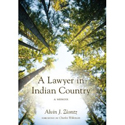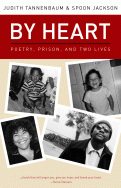Diversity, Equity, and Inclusion

2009, 328 pages, ISBN 978-0295989358. University of Washington Press, PO Box 50096, Seattle, WA, 98145, 800-537-5487, www.washington.edu/uwpress

April 2010, 224 pages, ISBN 978-0-9815593-5-3. New Village Press, PO Box 3049, Oakland, CA, 94609, 510-420-1361, www.newvillagepress.net
Read More...I began my work life over thirty years ago writing poems with children in my daughter’s kindergarten class. At that time, I didn’t think of myself as a community artist, the descriptor I’d come to use in a few years. I thought of myself as a mother, a volunteer, a lover of poems, and as someone who had fun sharing imagination with kids.
Read More...Recent studies on New York’s creative sector have established that the arts are a key asset in the city’s economic portfolio. Culture Counts: Strategies for a More Vibrant Cultural Life for New York City (2001); Creative New York (2005); and The Arts as an Industry: Their Economic Impact on New York City and New York State (2007) provide ample evidence that the diverse number of cultural institutions, arts-related businesses, and artists in New York generate employment, attract tourism, and enhance the city’s quality of life.
Read More...Before the house lights dim at a production of Romeo and Juliet, I look for myself and I am delighted to find myself as I was many years ago: A teenaged boy sitting by himself. I recognize him because he keeps checking the number on his ticket against the number on the armrest. All in all, he is pleased with his seat. He wears a sweater and tie. He reads his program with the intensity I used similarly to scrutinize the actors’ biographies, the director’s notes, and the advertisements for after-theater dining.
Read More...This arts and culture grantmaking case study is among the latest in a series of Diversity in Philanthropy Project (DPP) reports that examine how foundations can more effectively achieve excellence in various social, economic, and cultural investment arenas by expanding their focus on diversity and inclusivity.
Read More...Ralph Smith, the 2007 Conference Chairman, issued a challenge in his welcome message – “that all who attend will leave with renewed energy, capacity and resolve to make a positive contribution toward meeting the challenges of our time.”
Read More...This brief presents research findings as well as policy recommendations arising from a study of the No Child Left Behind Act and its implications for immigrant children and English language learners (ELLs). Analyses are based on nationally-representative data from the Schools and Staffing Survey and detailed case studies of selected elementary schools and school districts serving high concentrations of ELL students. Results reveal an extraordinary degree of concentration of ELL students in a few schools that tend to be large, urban and serve a predominantly minority student population.
Read More...Council on Foundations Annual Conference, May 1, 2001
Craig McGarvey, The James Irvine Foundation
From a position of received privilege, how should one behave so that it might be put to productive use as people are learning to get better at their work? This is a central question facing philanthropy, and it figured centrally in preparations for today. How to say something appropriate and helpful under such extraordinary circumstances?
There was the problem that no single foundation's body of work could possibly measure up to being singled out.
Read More...The story of how the Boston Foundation became the first community foundation to develop and implement policy on exercising its proxy votes on investments to advance its mission.
Posted courtesy of Stanford Social Innovation Review
Download:
![]() What Works (5.9Mb)
What Works (5.9Mb)
